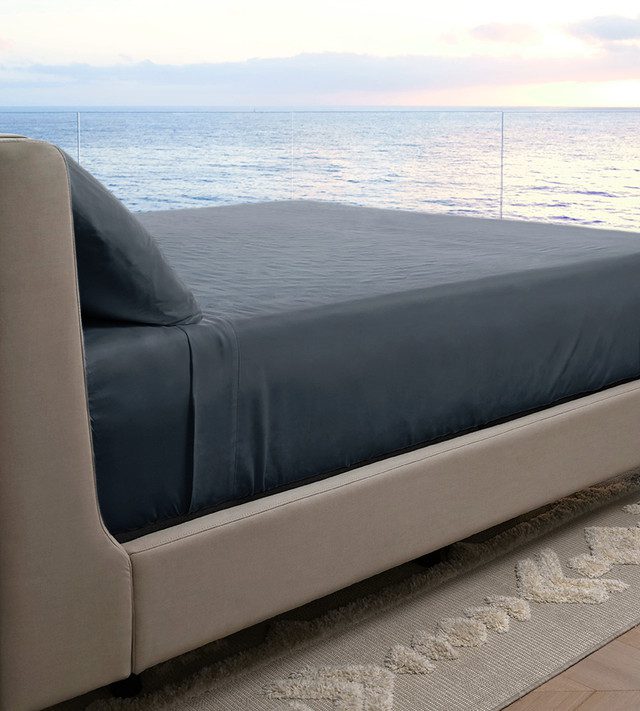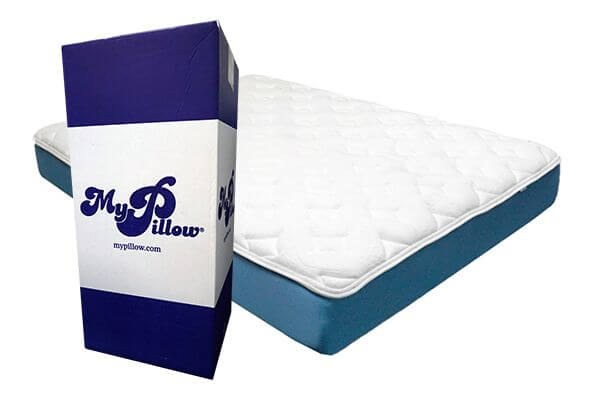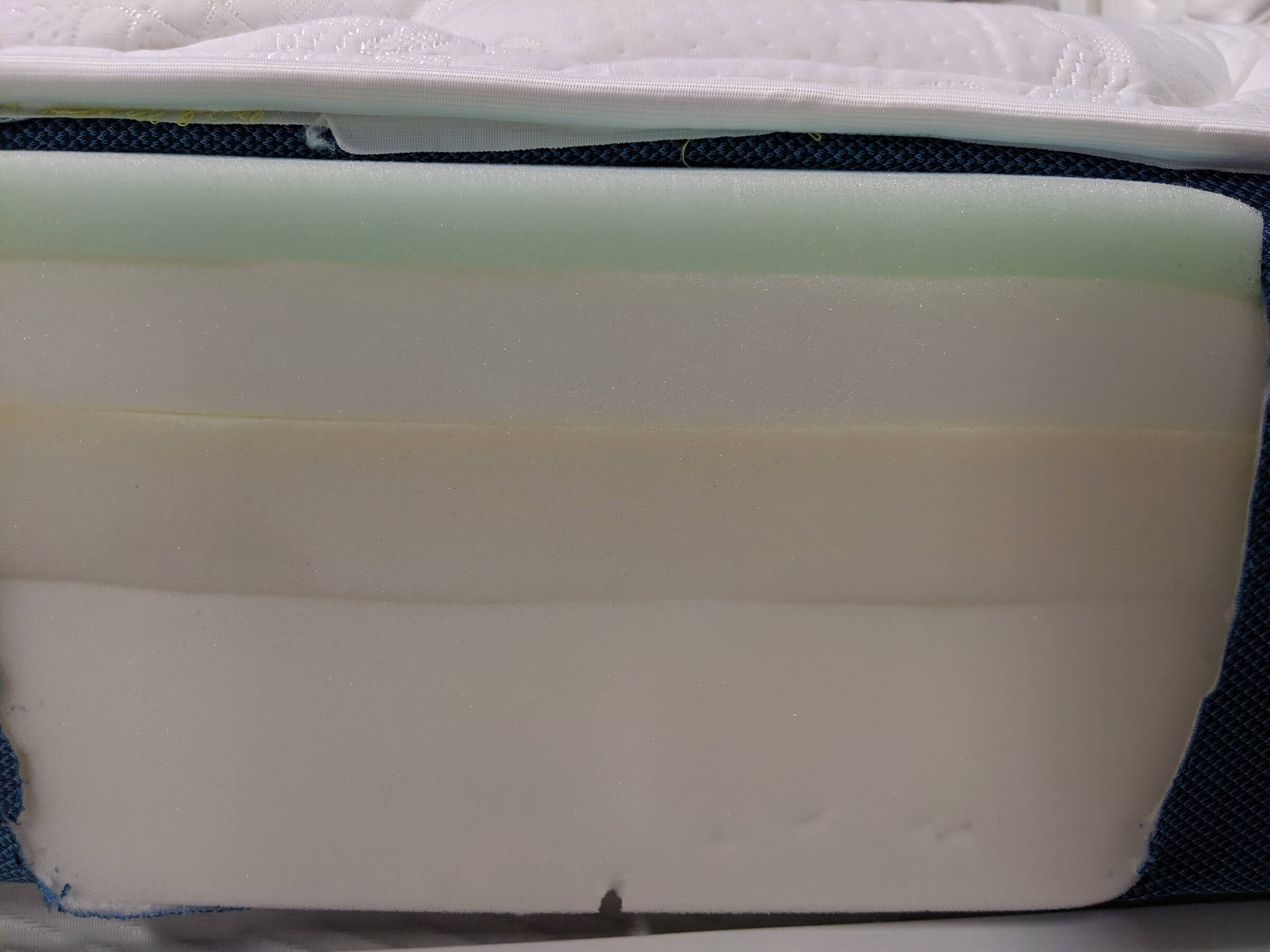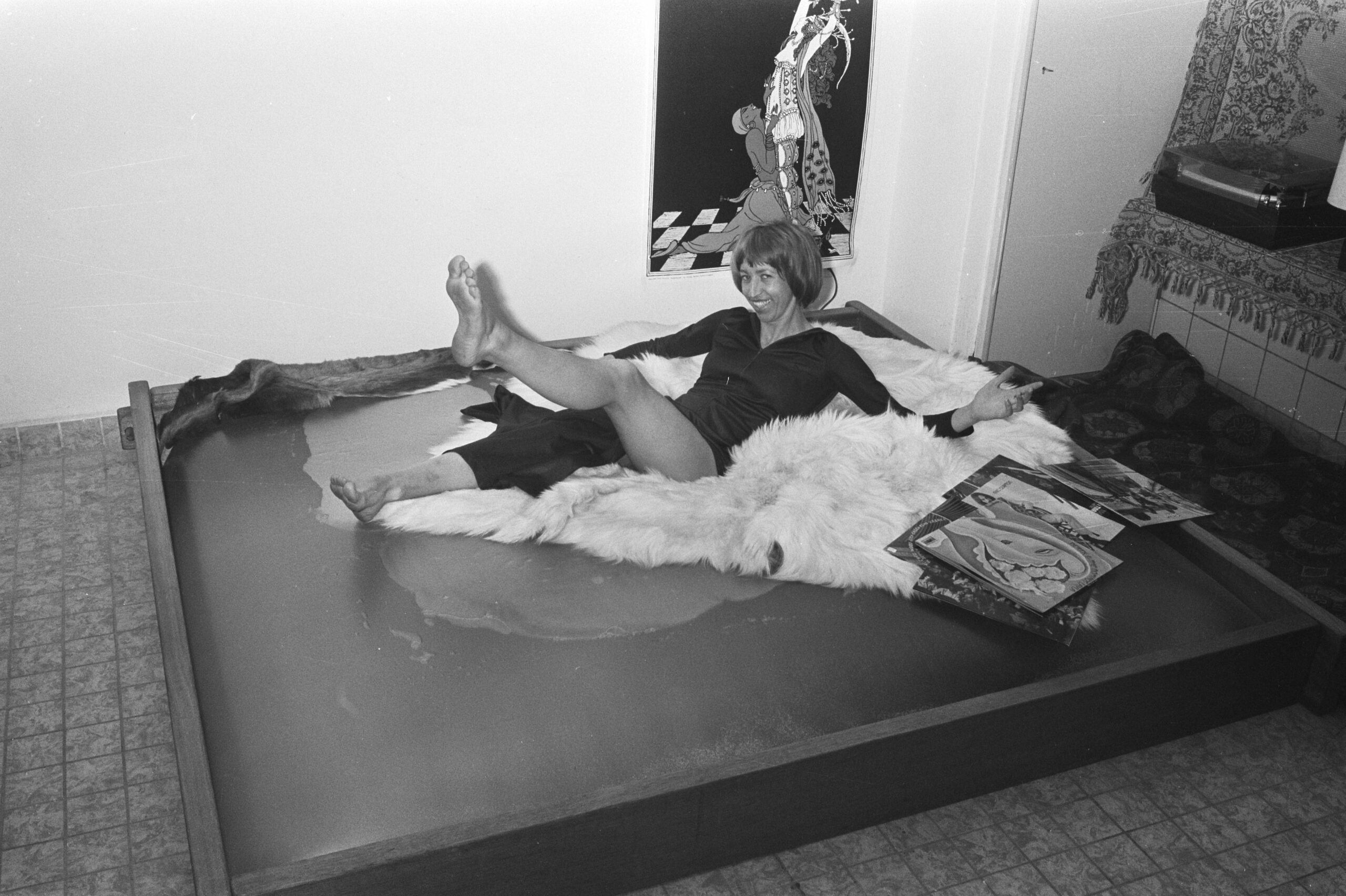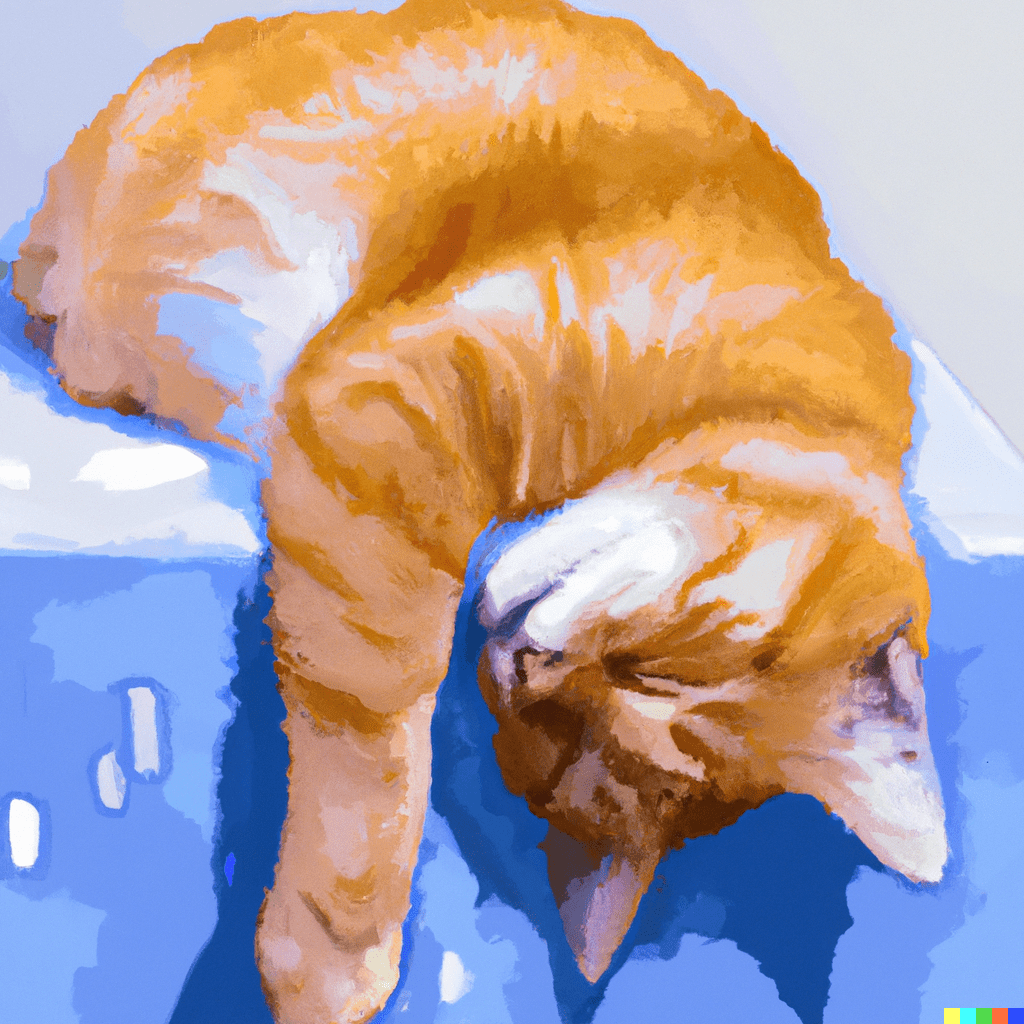Made of Viscose from Bamboo
These sheets feature a premium sateen finish and advanced box-stitch seams, providing comfort and craftsmanship that you can depend on sleep after dreamy sleep.
When it comes to bedding, we all want something that’s comfortable, durable, and eco-friendly. That’s where Cariloha sheets come in. Made from bamboo fabric, these sheets offer a luxurious sleeping experience while also being sustainable and earth-friendly.
I recently had the opportunity to try out a set of Cariloha sheets, and I was eager to see if they lived up to the hype. After sleeping on them for several weeks, I can confidently say that these sheets are worth considering if you’re in the market for a new bedding set. In this review, I’ll share my thoughts on the materials and construction of the sheets, their comfort and performance, their durability and maintenance, their eco-friendliness, and their overall value. Let’s dive in!
First and foremost, let’s talk about the materials and construction of the Cariloha sheets. As mentioned, these sheets are made from bamboo fabric, which is known for its softness and durability. The fabric is also hypoallergenic and moisture-wicking, which can be particularly beneficial for those with sensitive skin or who tend to get hot at night.
The Cariloha sheets are available in a variety of colors, and I opted for the classic white. Upon receiving them, I was immediately struck by how soft they felt. They have a silky texture that’s both luxurious and inviting, and I couldn’t wait to crawl into bed and see how they felt while sleeping.
The sheets are made with a sateen weave, which means they have a smooth, glossy finish that gives them a subtle sheen. They have a 400 thread count, which is a good indicator of quality and durability. I appreciate that Cariloha doesn’t rely solely on thread count as a measure of quality, but also considers other factors like the type of weave and the quality of the fibers themselves.
One thing I noticed when first putting the sheets on my bed is that they have a bit of a stretch to them. This made it easy to get them on my mattress without having to struggle or pull too hard. They also fit nicely without any excess fabric or bunching.
Overall, I’m impressed with the materials and construction of the Cariloha sheets. They feel high-quality and well-made, and I appreciate the attention to detail that went into their design. In the next section, I’ll share my thoughts on their comfort and performance.
I received a free set of Cariloha sheets for review. For years I have slept on cheap sheets from large retail stores. But I have also purchased sheets in excess of $150 from higher end department stores that were made from everything from cotton to silk. I was recently given the opportunity to review some bamboo sheets from Cariloha. Hands down these these are the best sheets my wife and I have ever slept on. They are smooth like silk sheets but not as slippery. They are also much more breathable and easier to clean as they can be washed in a regular washer and dryer, something not always easily done with silk sheets. I have learned that bamboo is also antibacterial so you won’t get that musty smell that cotton sheets usually acquire after a few months. The Cariloha bamboo sheets are also hypoallergenic which is a critical decision point for sheet shoppers. The Cariloha bamboo sheets are a bit more expensive than a traditional sheet set but given how long I usually have sheets, it’s well worth the investment. I don’t see myself ever purchasing anything other than bamboo sheets in the future.
Cariloha bamboo sheets also come with a lifetime quality guarantee so that if you ever have a problem with them, they will replace them for you. Bamboo is a “green” textile which means producing these sheets has a smaller impact on the environment than creating cotton sheets. A big plus if you’re at all concerned about the environment. Cariloha sheets are organically grown and they do not use bleach in the dying process. If that wasn’t enough, they also give back to society.
The sheets come in all sorts of colors to match your bedroom decor and according to their product literature, all their products are softer than any other comparable item in that category. A very high standard they have set for themselves and piece of mind for Cariloha consumers.
How do the Cariloha Sheets Feel?
I’m happy to report that the Cariloha sheets definitely deliver on comfort. As I mentioned earlier, they have a silky feel that’s incredibly soft and pleasant against the skin. I found myself looking forward to getting into bed at night just so I could experience that luxurious sensation.
The sheets are also very breathable, which is important for a good night’s sleep. I tend to get hot at night, so I appreciated the fact that these sheets didn’t trap in heat or make me feel sweaty. Instead, they helped regulate my body temperature, so I could stay comfortable all night long.
Another thing I appreciated about the Cariloha sheets is their moisture-wicking properties. I tend to sweat at night, which can make my bedding feel damp and uncomfortable. However, these sheets did a great job of wicking away moisture, so I didn’t wake up feeling sticky or gross.
One thing to note is that the sateen weave of these sheets does give them a bit of a slippery feel. This can take some getting used to, especially if you’re used to a more traditional cotton sheet. However, I personally found that the slipperiness wasn’t a big issue, and I got used to it after a few nights.
Overall, I’m very happy with the comfort and performance of the Cariloha sheets. They feel amazing to sleep on and offer a great combination of breathability and moisture-wicking. In the next section, I’ll share my thoughts on their durability and maintenance
The Durability of Cariloha Sheets
When investing in new sheets, it’s important to consider their durability and how well they’ll hold up over time. After all, no one wants to spend a lot of money on sheets only to have them start pilling or falling apart after a few washes.
In terms of durability, I’m happy to report that the Cariloha sheets seem to be very well-made. They have a substantial weight to them, which is a good sign of quality, and the fabric feels strong and durable. I’ve been using them for a few weeks now, and they still look and feel like new.
When it comes to maintenance, Cariloha recommends washing the sheets on a gentle cycle in cool water and tumble-drying on low heat. I followed these instructions and didn’t experience any issues. The sheets came out of the dryer looking and feeling great, with no shrinkage or pilling.
It’s worth noting that the sateen weave of these sheets can make them a bit more prone to snagging than a traditional cotton sheet. However, I haven’t experienced any snags or pulls yet, even though I have a cat who likes to knead on the bedding.
Overall, I’m impressed with the durability and maintenance of the Cariloha sheets. They feel like a high-quality, well-made product that will hold up well over time. In the next section, I’ll share my thoughts on the eco-friendliness of these sheets.
Eco-Friendliness
When it comes to choosing bedding, it’s important to consider the environmental impact of the materials used. The good news is that Cariloha sheets are made from bamboo, which is a highly sustainable and eco-friendly material.
Bamboo is one of the fastest-growing plants in the world, and it requires very little water to grow. Additionally, it doesn’t require pesticides or fertilizers, which makes it an excellent choice for organic farming. When processed into fabric, bamboo is naturally hypoallergenic, moisture-wicking, and breathable, making it an excellent choice for bedding.
In addition to using sustainable materials, Cariloha is also committed to eco-friendly manufacturing practices. They use a closed-loop system to recycle water and chemicals during production, which helps reduce waste and conserve resources. They also use renewable energy sources in their factories, further reducing their carbon footprint.
I appreciate the effort that Cariloha is putting into being an eco-friendly brand. It’s important to support companies that prioritize sustainability, and I feel good knowing that my bedding is made from a renewable and eco-friendly material.
In the next section, I’ll share my thoughts on the price and value of the Cariloha sheets.
Price
Now, let’s talk about the price and value of the Cariloha sheets. These sheets are definitely a bit of an investment, with prices ranging from around $140 to $240 depending on the size and color you choose.
However, I do think that the price is justified based on the quality of the sheets. They feel like a luxury product, with a silky-soft texture and a substantial weight that feels like it will last for years. Additionally, the fact that they’re made from eco-friendly bamboo fabric adds to their overall value.
When compared to other high-end bedding options, the price of Cariloha sheets is competitive. For example, a set of 100% organic cotton sheets from a high-end brand like Boll & Branch can easily cost over \$300.
Of course, the price of any product is subjective and will depend on your budget and priorities. However, I do think that the Cariloha sheets are worth considering if you’re in the market for a high-quality, eco-friendly bedding option.
Made of Viscose from Bamboo
These sheets feature a premium sateen finish and advanced box-stitch seams, providing comfort and craftsmanship that you can depend on sleep after dreamy sleep.



